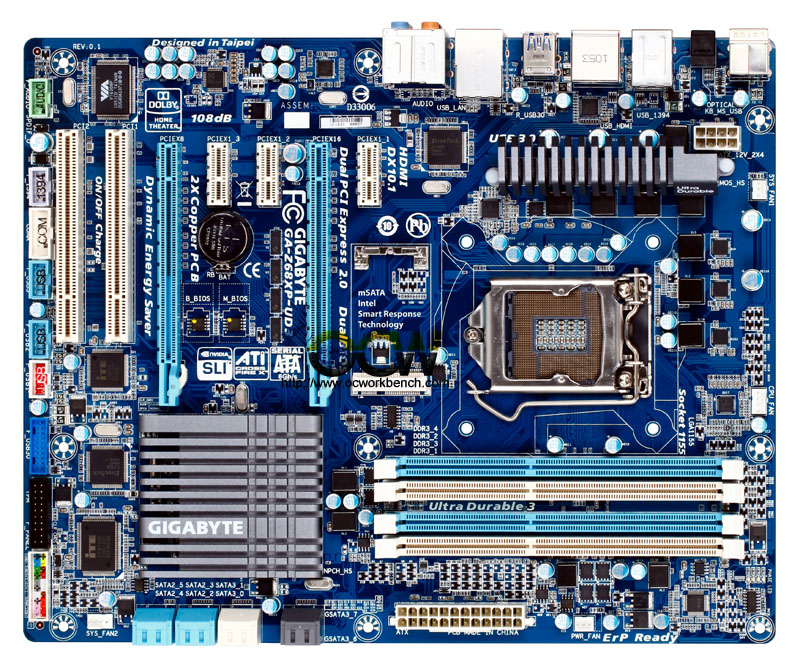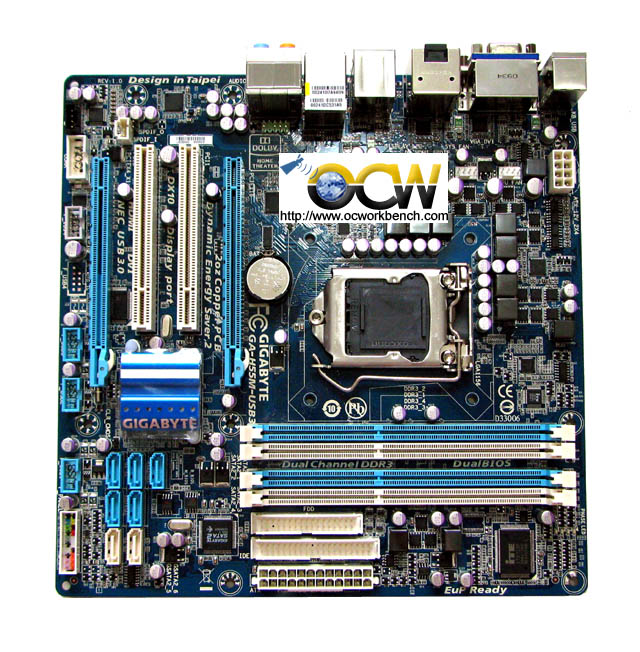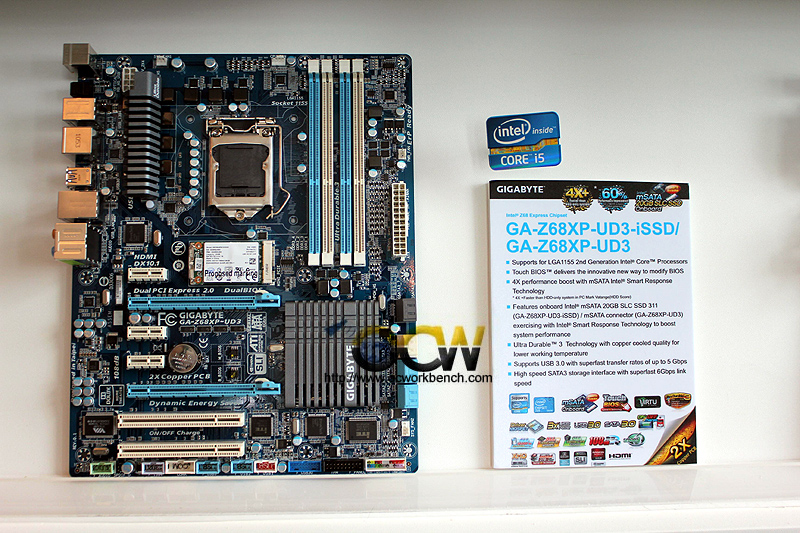Conclusion
on first sight, the Z68X-UD7-B3 resembles a board we have seen before. Yes, it is the P67A-UD7-B3. On careful examination, both board looks identical. Other than the Intel chipset used on the two boards, the layout is almost the same less colour (ref : comparison link on specifications).
Although Z68X-UD7-B3 uses the new hybrid chipset that is capable of video output, Gigabyte has somewhat removed that feature totally. We don’t see any HDMI, DVI-D, D-SUB ports from the backplate of the mainboard. A closer look at both boards tell us that the Z68X-UD7-B3 could be just a drop in replacement of the P67A-UD7-B3. As P67A-UD7-B3 uses the P67 chipset, it does not come with any video out.
Perhaps you might argue, why do I need to use Z68 integrated graphics on board when I can have CrossFireX or SLI. That is true in a way. Unfortunately, we discovered that the board doesn’t support Lucid Virtu. Thus, you won’t be able to tap the transcoding power of your processor when other cheaper Z68 boards can. Luckily, Gigabyte didn’t disable the ISRT feature, an important new feature of the Z68 system to cache and speed up system performance.
Features on board include Realtek 7.1 ch audio, 2 GbE with teaming, 4 PCIe slots running Dual 16x + Dual 8x, 2 SATA 6Gbps, 4 SATA 3Gbps, RAID 0,1,5,10 by chipset. There are 2 more Marvell 88SE9128 on board that supports 2 SATA 6Gbps, 2 eSATA 6Gbps, both RAID 0/1 supported. The chipset supports 8 USB 2.0/1.1 ports. In addition, the 2 Renesas D720200 and 2 VLI VL810 hub supports up to 10 USB 3.0/2.0 ports. There is also 1394 support via brackets.
Software wise, there is Touch BIOS (see video on page 3). System performance can be improved by Intel Smart Response Technology with easy setup software – GIGABYTE EZ Smart Response. Other features include Dual BIOS 3TB+ HDD support, on/off charge, SuperSpeed USB 3.0, Turbo XHD, 3X power boost, DES 2, power esata, smart dual lan, Smart 6, Cloud OC, Auto Green etc.
Performance of the board is on par with the Intel P67. We noticed that when it comes to high resolution benchmarks, the performance seem to be slightly lower than the discrete chipset P67. Installation of the board is easy as it has all the debug led to help. Somewhat I find the Clear CMOS to be out of position as it is usually located next to the CMOS battery.
In our test of HDD speed with PC Mark Vantage, the board scored 3315. With ISRT enabled, the HDD score shot up to 12518, a 277% increase.
Overclocking features are plenty, you can refer to our video on page 4 of this review.In our test, we managed to do 4.5GHz on AIR stable with vcore increase to 1.325v and vdimm at 1.65v C9 9 9 24 2T. Below is a screen shot.
Documentation is pretty well written. I particularly like the system block diagram which shows you how the various components interact. Packaging is pretty complete with all the necessary brackets, SLI and CF bridges thrown in.
Overall, the experience is a positive one. The unique features also stands out from the competition e.g. Gigabyte EZ Smart Response, Cloud OC. If you do not require the integrated transcoding power of the processor as it doesn’t come with Lucid Virtu and if you require multi graphics cards for gaming, this board would be a good upgrade from the P67 version of the UD7.
Pros
CloudOC
Turbo XHD
3X USB Power Boost
3 way SLI/CF
ISRT
Cons
No Lucid Virtu
No display output
Ratings
Here are my ratings out of 10.
| Category | Score |
| Performance | 10 / 10 |
| Features | 9 / 10 |
| Ease Of Installation | 10 / 10 |
| Overclocking Features | 10 / 10 |
| Documentation | 8 / 10 |
| Packaging | 8 / 10 |
| Cost / Performance | 8 / 10 |
| Overall Rating : | 9 / 10 |








[…] Gigabyte GA-Z68X-UD7-B3 mainboard Review […]